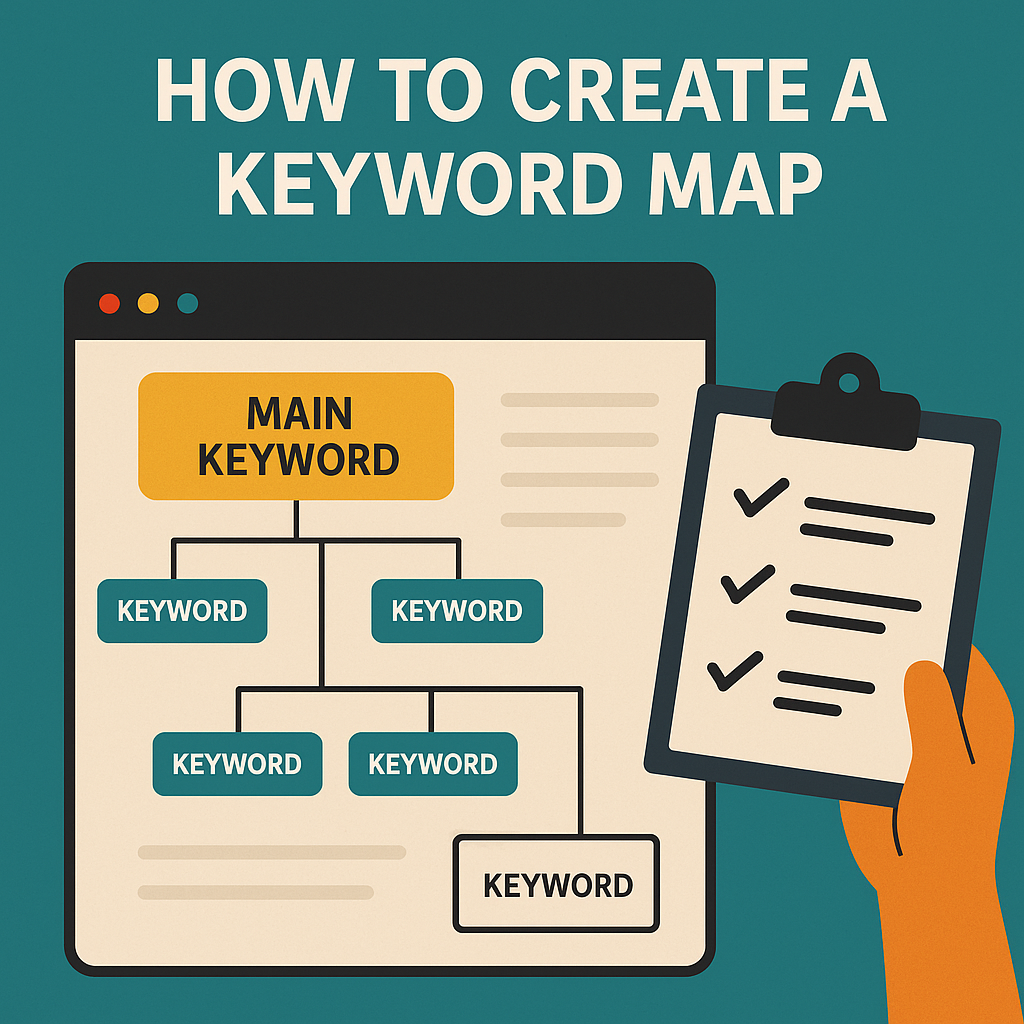
How to Create a Keyword Map
📌 What Is Keyword Mapping?
Keyword mapping is the process of assigning target keywords to specific pages (URLs) on your website based on intent and relevance. It ensures:
-
No keyword cannibalization
-
Clear topical focus for each page
-
Smarter content development
🧰 Tools You’ll Need (Free or Paid)
-
Google Search Console – For performance data
-
Google Sheets / Excel / Notion – For mapping
-
Keyword Research Tool (like Ahrefs, Semrush, Ubersuggest, or Google Keyword Planner)
-
Google Search (manual) – For checking search intent
-
Screaming Frog (optional) – To audit existing URLs
✅ Step-by-Step: How to Create a Keyword Map
Step 1: Gather All Relevant Keywords
Start with comprehensive keyword research:
-
Seed keywords based on your product/services
-
Use tools like:
-
Google Keyword Planner
-
Semrush / Ahrefs / Ubersuggest
-
Google’s autocomplete and “People Also Ask”
-
Competitor analysis
-
📊 Export:
-
Keyword
-
Search volume
-
Keyword difficulty
-
CPC
-
Intent
-
URL (if already ranking)
Step 2: Categorize Keywords by Search Intent
Classify each keyword into intent buckets:
| Intent Type | Example Keywords |
|---|---|
| Informational | “what is SEO”, “how to bake a cake” |
| Navigational | “Netflix login”, “Nike homepage” |
| Transactional | “buy running shoes”, “order flowers online” |
| Commercial Investigation | “best CRM software”, “Nike vs Adidas” |
🧠 Why this matters: You don’t want to map a buying intent keyword to a blog article page.
Step 3: Group Keywords into Topics (Clusters)
Find keyword variations and closely related terms that support a single topic.
Example cluster:
-
Main keyword: “Email marketing software”
-
Variants: “best email tools”, “email automation tools”, “top email marketing platforms”
Use this grouping to:
-
Avoid redundancy
-
Plan pillar + cluster content
-
Support internal linking
Step 4: Audit Existing Pages
Pull a list of your website’s current URLs. You can use:
-
Google Search Console
-
Screaming Frog SEO Spider
-
XML sitemap
Analyze:
-
What keywords are each page already ranking for?
-
Do any pages overlap in keyword focus? (→ risk of cannibalization)
-
Which pages are missing key opportunities?
Step 5: Match Keywords to Pages
Now assign keywords to the most relevant URLs:
| URL | Main Keyword | Supporting Keywords | Intent | Notes |
|---|---|---|---|---|
| /seo-services | seo services | affordable seo, local seo experts | Transactional | Service page |
| /blog/what-is-seo | what is seo | how seo works, basics of seo | Informational | Educational article |
| /tools/email-platforms | email marketing software | best email tools, email automation platforms | Commercial | Comparison guide |
💡 1 page = 1 main keyword + supporting variations
Step 6: Identify Gaps & Opportunities
-
Are there high-value keywords with no matching page? → Add them to your content calendar.
-
Are multiple pages targeting the same keyword? → Consolidate or differentiate their content.
Step 7: Optimize and Update Content Accordingly
Once your map is complete:
-
Update each page’s title tag, H1, meta description, and internal links
-
Create new content where needed
-
Use internal linking between cluster content and pillar pages
🗂 Example Keyword Map Template (in Google Sheets)
| Page URL | Primary Keyword | Search Intent | Volume | Supporting Keywords | Content Type | Status |
|---|---|---|---|---|---|---|
| /email-marketing | email marketing guide | Informational | 12,000 | how email marketing works | Blog article | Published |
| /tools/email | email marketing tools | Commercial | 7,800 | best email platforms | Comparison page | To Create |
| /pricing | email software pricing | Transactional | 2,500 | email automation pricing | Landing page | Existing |
🧠 Pro Tips
-
Use Google Search to manually verify the intent behind each keyword.
-
Map long-tail keywords to deeper blog content or FAQs.
-
Use filters and tags in your sheet to track priority and status.
-
Revisit your map quarterly to adjust for SEO changes or new opportunities.
✅ Benefits of Keyword Mapping
-
Improves on-page SEO clarity
-
Helps avoid keyword cannibalization
-
Aids in content planning and internal linking
-
Aligns SEO with user intent and site architecture
-
Drives better rankings and conversions
Author



